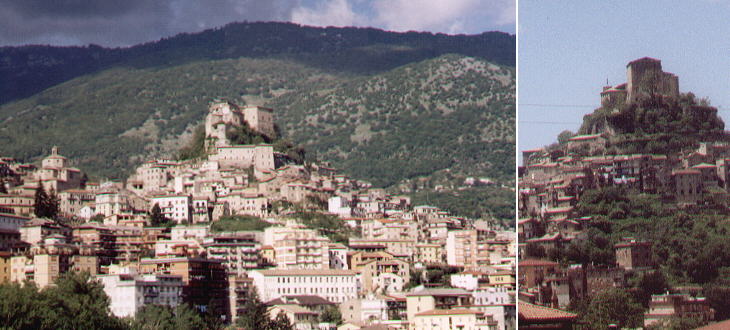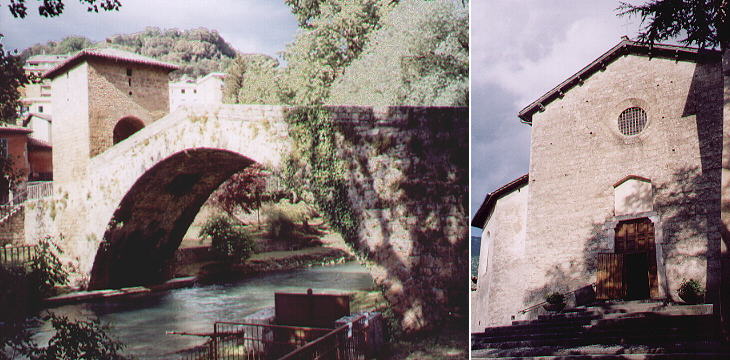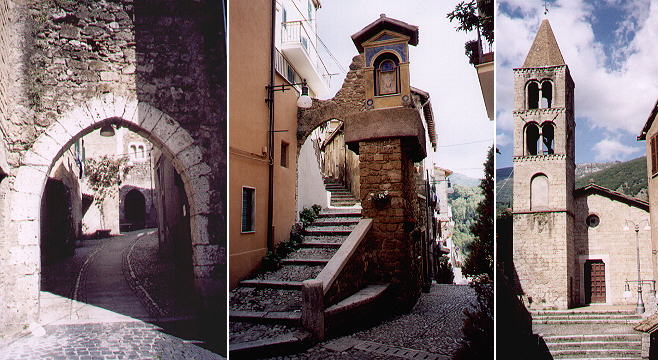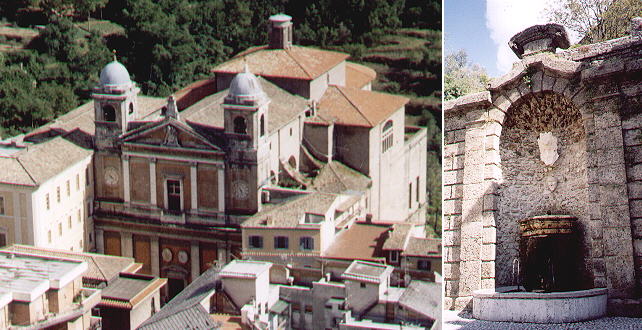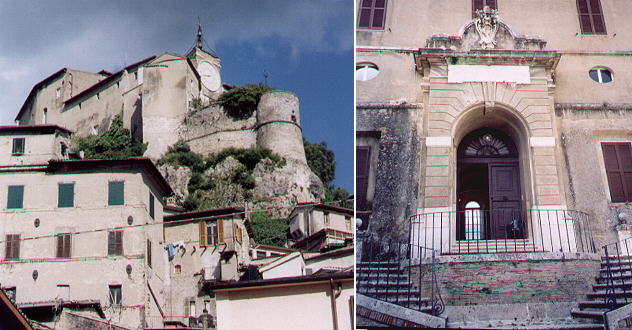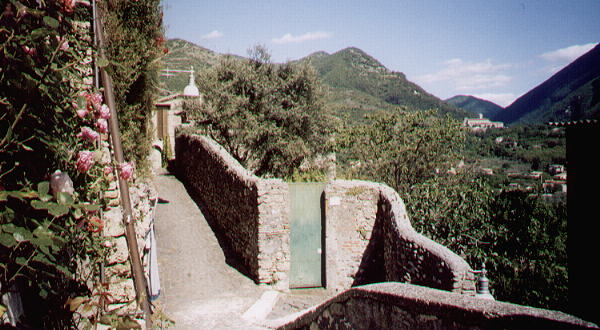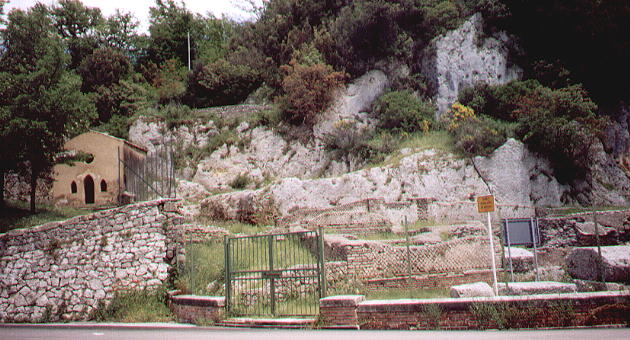  Ferdinand Gregorovius' Walks - Subiaco: the town
The library of the Benedictine abbey of S. Scolastica near the town of Subiaco was a precious source of information to Ferdinand
Gregorovius in his effort to reconstruct the history of Rome during the Middle Ages. He eventually wrote a short account
of the history of the abbey in Subiaco
das šlteste Benediktinerkloster des Abendlandes.
The town of Subiaco has a medieval origin and it developed around a castle built by the Benedictine abbots as an advanced defence of the monasteries. The following are key dates in the history of the Benedictine abbeys and of Subiaco: 497 (ca.) Benedict begins to live as a hermit in a remote cavern located in a gorge formed by the River Aniene: later on he is followed by other young men and women (including Scolastica, twin sister of Benedict) and they develop a community organized in twelve monasteries. Benedict founds a monastic order having strict links with the Bishop of Rome, in contrast with the then prevailing Basilian order which had strong ties with the Eastern Roman Empire (the Western Roman Empire had ended in 473). In 529 Benedict leaves Subiaco to found a new monastery in Montecassino. 590-604 Pope Gregorius I the Great writes an account of the life of St. Benedict and he is supposed to have granted the first possessions to the monasteries of Subiaco. XIth century: the abbots of the monastery of S. Scolastica gradually become the masters of the upper Aniene valley. XIVth century: during the absence of the popes from Rome, the abbots of Subiaco expand their possessions by defeating the troops of the bishops of Tivoli. 1455: Pope Callistus III appoints a cardinal to rule over the Abbey and its possessions. In 1467 Cardinal Rodrigo Borgia (Pope Alexander VI) strengthens the castle of Subiaco where he sets his residence. XVIth century: the cardinals ruling the Abbey are generally members of the Colonna family. XVIIth century: the cardinals ruling the Abbey are generally members of the Borghese or Barberini family. 1753: Pope Benedictus XIV abolishes the feudal rights of the Abbey over Subiaco: the town falls under the direct jurisdiction of the papal state. 1773: Cardinal Gianangelo Braschi (Pope Pius VI) promotes the development of Subiaco and the opening of a new road linking the town with Tivoli.
The bridge was built in 1358 by the Prince-Abbot Ademar to celebrate his victory over the troops of the Bishop of Tivoli. As the bridge provided an easier access to Subiaco, Ademar thought better to protect it with a tower. The simple monastery of S. Francesco is located on the other side of the river and it was built in 1327 on a previous oratory donated by the abbots to St. Francis, when he visited Subiaco.
Notwithstanding damage suffered during WWII, Subiaco retains most of its medieval atmosphere including a very picturesque sacred image located in the quarter of Pietra Spaccata.
Subiaco does not have significant Renaissance or Baroque buildings, but in the late XVIIIth century Pope Pius VI, who lived in Subiaco when he was a cardinal, did a lot to improve the economy of Subiaco and to embellish the town. An arch in his honour was erected in 1789 to celebrate the completion of a new road. The image used as a background for this page shows his coat of arms at the top of the arch: the arch itself can be seen in a page dedicated to this pope. S. Andrea is the main church of Subiaco and it was built at the initiative of Pius VI and designed by Antonio Camporese. Also the fountain in the square below the castle belongs to the same period.
The castle, called Rocca Abbaziale, included the residence of the cardinals. Pius VI enlarged and modified it into a stately mansion, but from the outside the Rocca retains its medieval fortified appearance.
While the cavern where Benedict lived as a hermit and upon which in the XIIIth century a monastery was built is located in a gorge not visible from Subiaco, the monastery of S. Scolastica is clearly visible from Subiaco.
In 1688 the access to S. Scolastica and to Sacro Speco (the monastery built on the saint's cavern) was facilitated by the opening of a road flanked by a series of chapels. The road (on the left in the picture above) passes very near the ruins of a building belonging to Nero's villa: what's left is hardly impressive because all the marbles and columns of the villa were taken away to decorate the monasteries and their churches. Move to page two. Introductory page on Ferdinand Gregorovius Other walks: Roman Campagna: Palestrina Genazzano Paliano Anagni The Ernici Mountains: Ferentino Alatri The Volsci Mountains: Valmontone Segni Norma Cori On the Latin shores: Anzio Nettuno and Torre Astura Circe's Cape: Terracina San Felice The Orsini Castle in Bracciano See my Home Page on Baroque Rome or my Home Page on Rome in the footsteps of an XVIIIth century traveller |
All images © 1999 - 2004 by Roberto Piperno. Write to romapip@quipo.it
